Efficient Project Management with JIRA Dashboards
Managing website redesigns and enhancements can be a significant undertaking. Here at Allegiance Group + Pursuant, we put a lot of thought into ensuring maximal efficiency in our development process, and a core part of that comes from effectively using project management tools.
A few months ago, we began using JIRA for tracking bugs and tasks, and while it’s still an evolving process, here’s a quick glimpse into how we’re taking advantage of JIRA’s flexibility to keep projects running under budget and deadline.
Deadlines and Priority
There are always more tasks than time available in a week. One of our core commitments at Allegiance is ensuring a healthy work/life balance, so we strive to ensure that no one has much more than 40 hours of billable work each week. We reserve developer and designer time (up to 40 or so hours/week), often months in advance, and whenever possible, try not to use more of anyone’s time than we’d reserved.
Instead of focusing on prioritizing tickets, a somewhat squishy metric, I’ll set deadlines for tickets based on the amount of time I’d reserved for that developer for that week, based on those tickets’ hourly estimates. For more massive website builds, prioritized tickets can also be an effective approach.
Workflow
Tickets can have several different states, as you can see. In addition to these states, we also use several other workflow options. Using these options allows for more granular views of the ticket status.
Optional Workflow Steps
- Place on Hold
- Clarify with Allegiance (internal discussions needed)
- Clarify with the Client (a decision from the client is needed)
Dashboards
One of JIRA’s greatest strengths is the ability to build customized dashboards. I keep two types of dashboards, one for a general look at tickets across projects and also project-specific dashboards. Here are a few of the reports (or gadgets, as JIRA calls them) that I use on my dashboards, along with which kinds of tickets are tracked within each gadget. (The way you limit tickets within a gadget is known as a filter in JIRA-speak)
A few of the reports (or gadgets, as JIRA calls them) that I’ve found most useful for tracking tickets across projects:
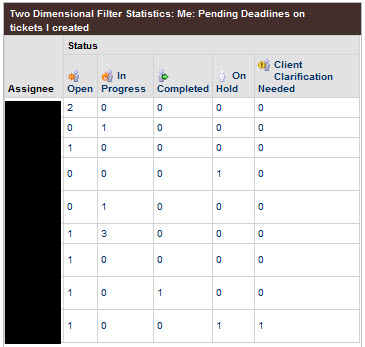
Listing of who is working on each open ticket I’ve created, along with the status of each
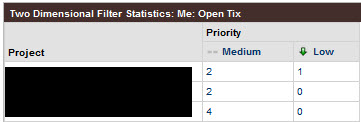
This lists the tickets I have open, broken down by projects and priority

Word cloud of ticket topics
I also have gadgets that list all tickets
- assigned to me with pending deadlines
- assigned to me and open
- assigned to me and pending client action
- assigned to me and on hold (a more long-term status)
On each project-specific dashboard, I use the following gadgets:
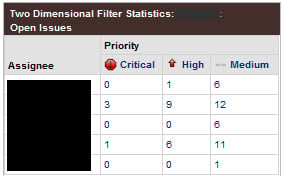
Listing of who is working on each ticket, along with priorities for each.
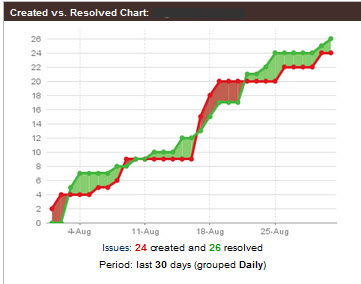
Graph of how quickly tickets are being resolved, compared to how quickly new tickets are being opened.
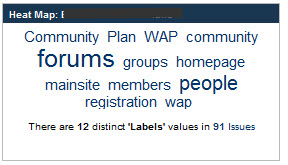
Heat Map for Open Issues for that Project.
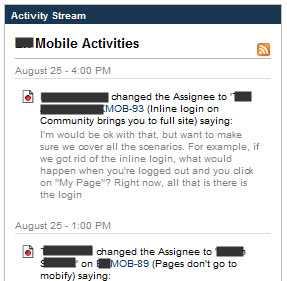
An activities listing gives a quick overview of everything that’s been happening recently with the project.
I also keep lists of the tickets for that projects, which are:
- assigned to me
- open (w/ pending deadlines)
- waiting on client action
- recently updated
What’s your approach?
Everyone has their own style of managing tasks and tracking tickets. Hopefully, these approaches gave you inspiration for what could work best for you. Feel free to share in the comments how you manage group tasks.